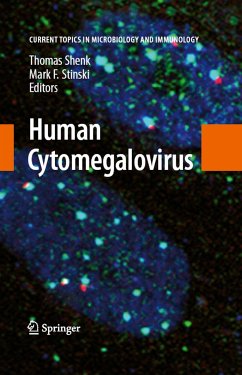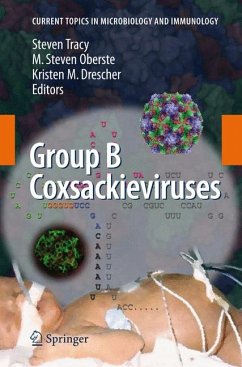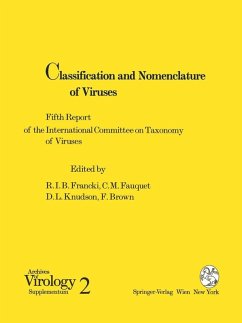
Epstein Barr Virus Volume 1 (eBook, PDF)
One Herpes Virus: Many Diseases
Redaktion: Münz, Christian
Versandkostenfrei!
Sofort per Download lieferbar
112,95 €
inkl. MwSt.
Weitere Ausgaben:

PAYBACK Punkte
56 °P sammeln!
Epstein Barr virus (EBV) was discovered as the first human tumor virus around 50 years ago. Since its discovery in Burkitt's lymphoma it has been associated with various other malignancies, infectious mononucleosis and even autoimmune diseases. The two book volumes on EBV summarize the first 50 years of research on this tumor virus, starting with historical perspectives on discovery, oncogenicity and immune control, reviewing the role that the virus plays in the various associated diseases and concluding with a discussion on how the immune system keeps persistent EBV infection under control in...
Epstein Barr virus (EBV) was discovered as the first human tumor virus around 50 years ago. Since its discovery in Burkitt's lymphoma it has been associated with various other malignancies, infectious mononucleosis and even autoimmune diseases. The two book volumes on EBV summarize the first 50 years of research on this tumor virus, starting with historical perspectives on discovery, oncogenicity and immune control, reviewing the role that the virus plays in the various associated diseases and concluding with a discussion on how the immune system keeps persistent EBV infection under control in healthy EBV carriers and can be used to treat EBV associated diseases. The respective 32 chapters are written by international experts from three continents for health care providers, biomedical researchers and patients that are affected by EBV. The assembled knowledge should help to understand EBV associated diseases better and to develop EBV specific vaccination in the near future.
Dieser Download kann aus rechtlichen Gründen nur mit Rechnungsadresse in A, B, BG, CY, CZ, D, DK, EW, E, FIN, F, GR, HR, H, IRL, I, LT, L, LR, M, NL, PL, P, R, S, SLO, SK ausgeliefert werden.












